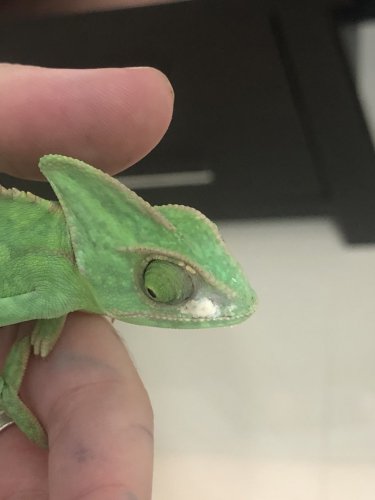giannarodd
New Member
It’s been about 2 weeks since my parents surprised me with my first chameleon, Edwin (2months old). I allowed him to acclimate to his environment so that we wouldn’t stress him out, only interacting with him when I was feeding and misting his enclosure. When my parents first brought him to me he had a burn on his right side- most likely from a heat lamp. Today when I finally held him I noticed a crust forming in the same spot as the burn. He’s also been having some issues feeding with crickets but ate 10 meal worms today and drank a ton of water which softened the crust on his eye and it just came off. I’m not sure if I should be concerned, or if I should be doing something different. Any advice is incredibly appreciated







